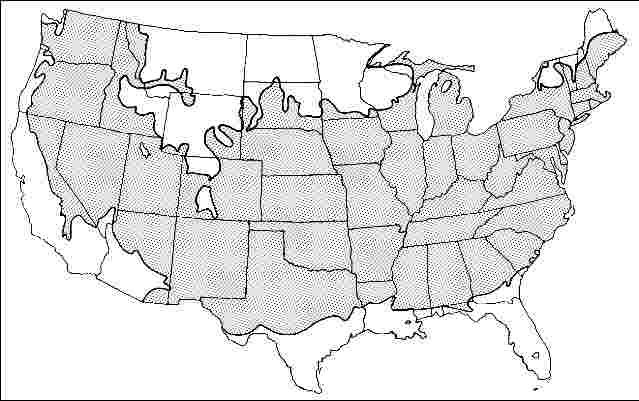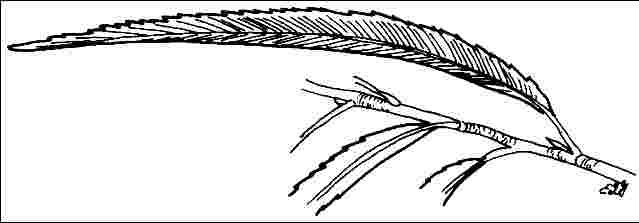Introduction
A small to medium-sized, upright spreading tree of about 30 feet in height with a 15-foot-spread, the main ornamental feature of this plant is the contorted and twisted branches and twigs. Branches arise from the trunk at an acute angle and grow up almost parallel to the trunk before they curve back to the horizontal. The winter branch pattern is most interesting and probably accounts for the popularity of the tree.

General Information
Scientific name: Salix matsudana
Pronunciation: SAY-licks mat-soo-DAY-nuh
Common name(s): Corkscrew willow, pekin willow, hankow willow
Family: Salicaceae
USDA hardiness zones: 4B through 8A (Fig. 2)
Origin: not native to North America
Invasive potential: little invasive potential
Uses: specimen; bonsai
Availability: somewhat available, may have to go out of the region to find the tree

Description
Height: 25 to 35 feet
Spread: 15 to 20 feet
Crown uniformity: symmetrical
Crown shape: oval, upright/erect
Crown density: moderate
Growth rate: fast
Texture: fine
Foliage
Leaf arrangement: alternate (Fig. 3)
Leaf type: simple
Leaf margin: serrate
Leaf shape: linear, lanceolate
Leaf venation: pinnate
Leaf type and persistence: deciduous
Leaf blade length: 2 to 4 inches
Leaf color: green
Fall color: yellow
Fall characteristic: showy

Flower
Flower color: unknown
Flower characteristics: not showy
Fruit
Fruit shape: unknown
Fruit length: less than .5 inch
Fruit covering: dry or hard
Fruit color: unknown
Fruit characteristics: does not attract wildlife; not showy; fruit/leaves a litter problem
Trunk and Branches
Trunk/bark/branches: branches don't droop; not showy; typically multi-trunked; thorns
Pruning requirement: needed for strong structure
Breakage: susceptible to breakage
Current year twig color: gray, brown
Current year twig thickness: thin
Wood specific gravity: unknown
Culture
Light requirement: full sun, partial sun, or partial shade
Soil tolerances: clay; sand; loam; acidic; alkaline; well-drained; occasionally wet
Drought tolerance: moderate
Aerosol salt tolerance: high
Other
Roots: not a problem
Winter interest: yes
Outstanding tree: no
Ozone sensitivity: unknown
Verticillium wilt susceptibility: resistant
Pest resistance: sensitive to pests/diseases
Use and Management
The tree makes a nice accent or specimen in a residential or commercial landscape but does not have the long-life needed for a permanent street tree. The tree has the same undesirable features of other willows including weak wood and insect problems. Weak branch crotches can make the tree fairly prone to breakage as it grows older. Also very prone to trunk and branch decay initiated by mechanical injuries. Like many willows, this one does best in moist areas but will tolerate some drought. Surface roots can be a problem as the tree grows older. Locate carefully since it is usually short-lived with aggressive roots and breaks apart as it gets older. Not for general planting but can be used for an occasional specimen.
The cultivar 'Pendula' has a fine-texture weeping form reminiscent of a water garden. Plant it near water to create a quieting effect. Other cultivars exist with different canopy forms and foliage variations.
The tree is propagated by cuttings.
Pests
Aphids cause deposits of honeydew on lower leaves. Spraying large trees may not be necessary as predatory insects will bring the aphid population down.
Gypsy moth enjoys eating willows.
Imported willow leaf beetles are metallic blue and the larvae are black. The larvae do most of the feeding on leaves. The adults eat the entire leaf while larvae skeletonize the leaves. There are two generations per year. Damage is usually not severe enough to warrant control.
Lace bugs cause mottling and yellowing of the leaves. The insects are small, found under the leaves, and have transparent wings with dark veins.
Poplar and willow borer in the trunk may be serious on newly planted trees. In spring the insects expel frass through openings in the trunk. The frass clings to the bark. Irrigate willows until well established.
Diseases
Usually none are serious enough to warrant control.
Crown gall causes galls to form near the soil line or farther up the plant. Take out infected plants and do not replant in the same area for at least two years.
Willow scab attacks and kills young leaves within a very short time. The fungus enters twigs, kills back the young shoots and causes cankers. Olive green spore masses can be seen along the veins on the undersides of leaves. Another fungus, Physalospora miyabeana, attacks willow and the two fungi in combination cause willow blight. Prune out infected branches and use resistant species.
Black canker causes dark brown spots on the leaves. Whitish gray lesions with black borders appear on the twigs and stems. Prune out infected branches and use resistant species. Weeping willow appears to be resistant.
Many fungi cause cankers on willow and infected branches are pruned out. If the trunk is infected and girdled, the tree will die. Keep trees healthy by regular fertilization.
Many fungi cause leaf spots but are not serious enough to warrant preventive sprays. Rake up the fallen diseased leaves in the fall.
Powdery mildew causes a white coating on the leaves. The disease is usually not serious.
Rust causes yellow spots on the lower surface of leaves and, if severe, defoliation. Rake up and destroy leaves from diseased trees.
Tar spot causes black, raised spots on leaves which are harmless. Rake up and dispose of fallen leaves from diseased trees at the end of the growing season.